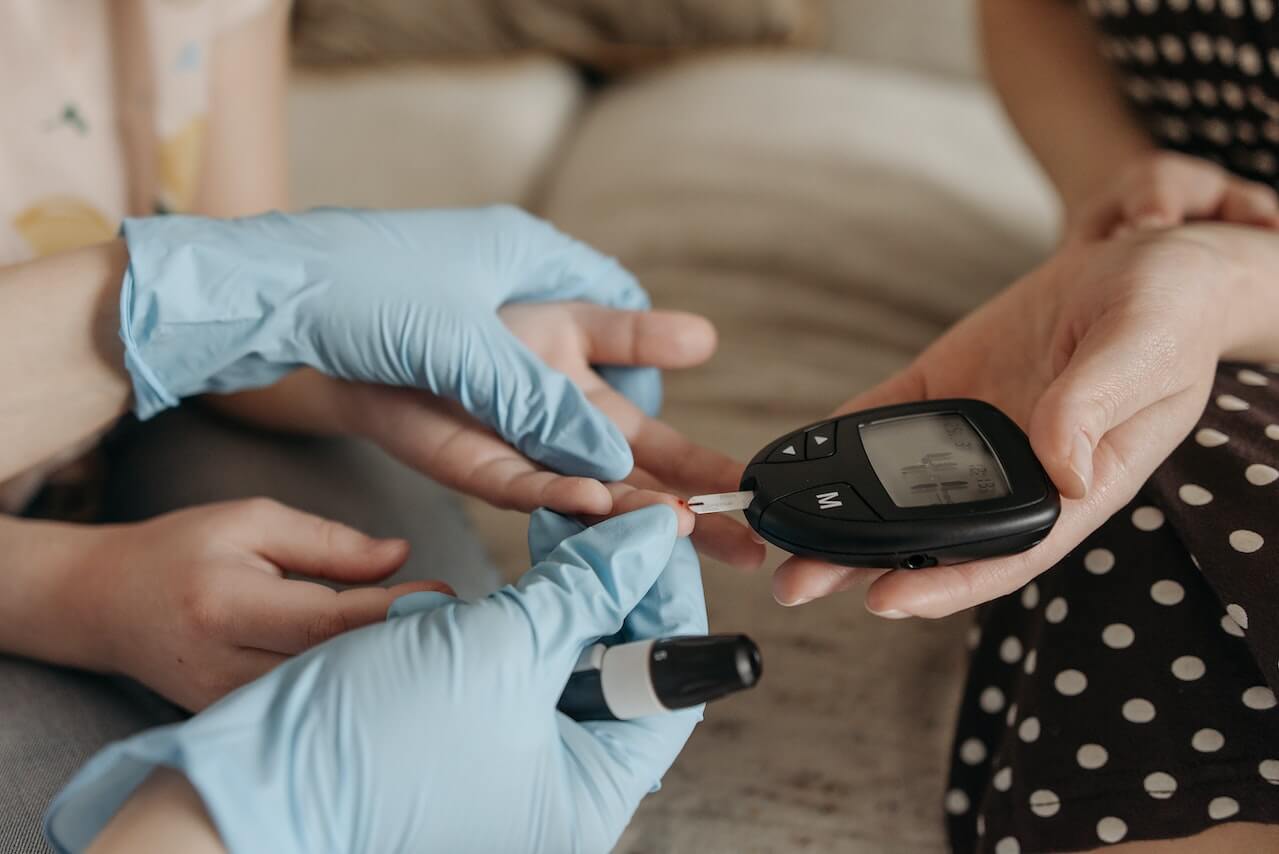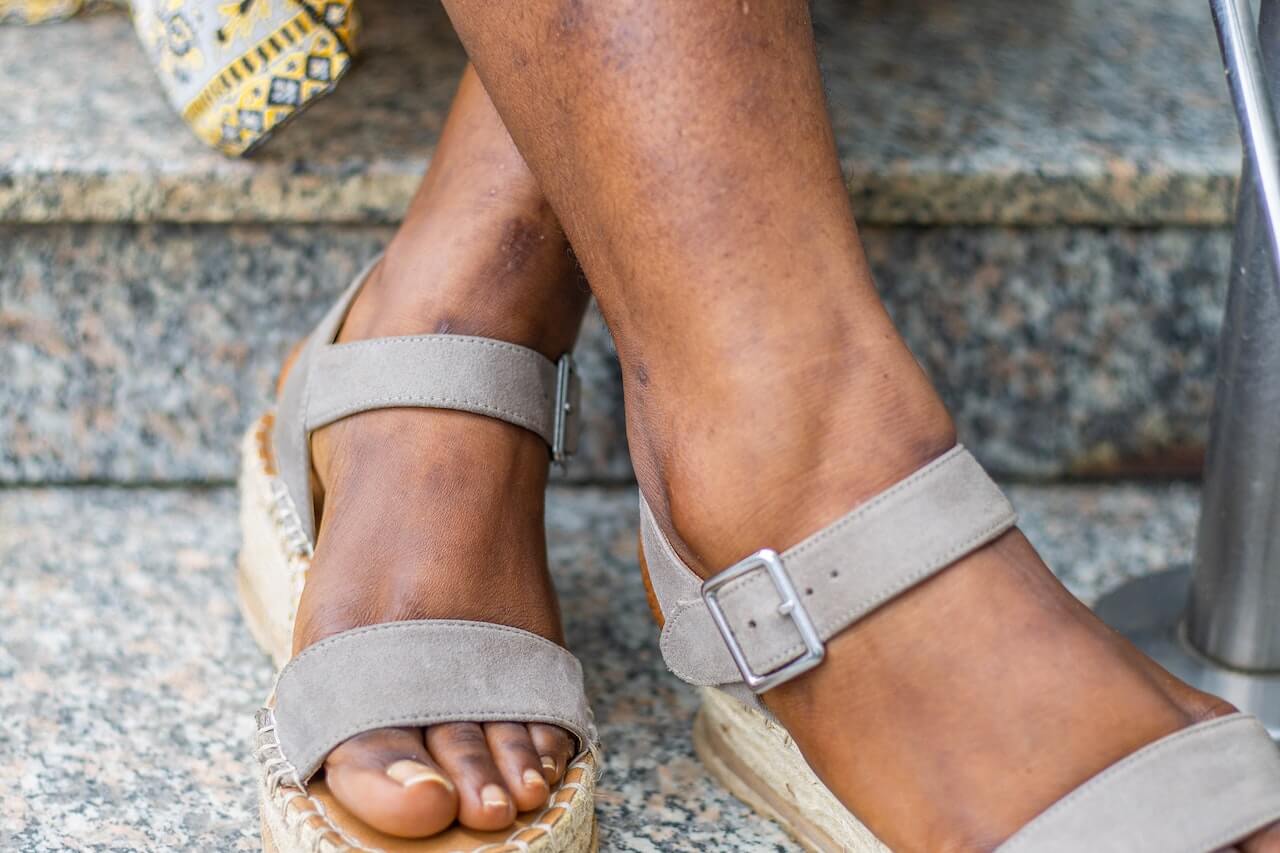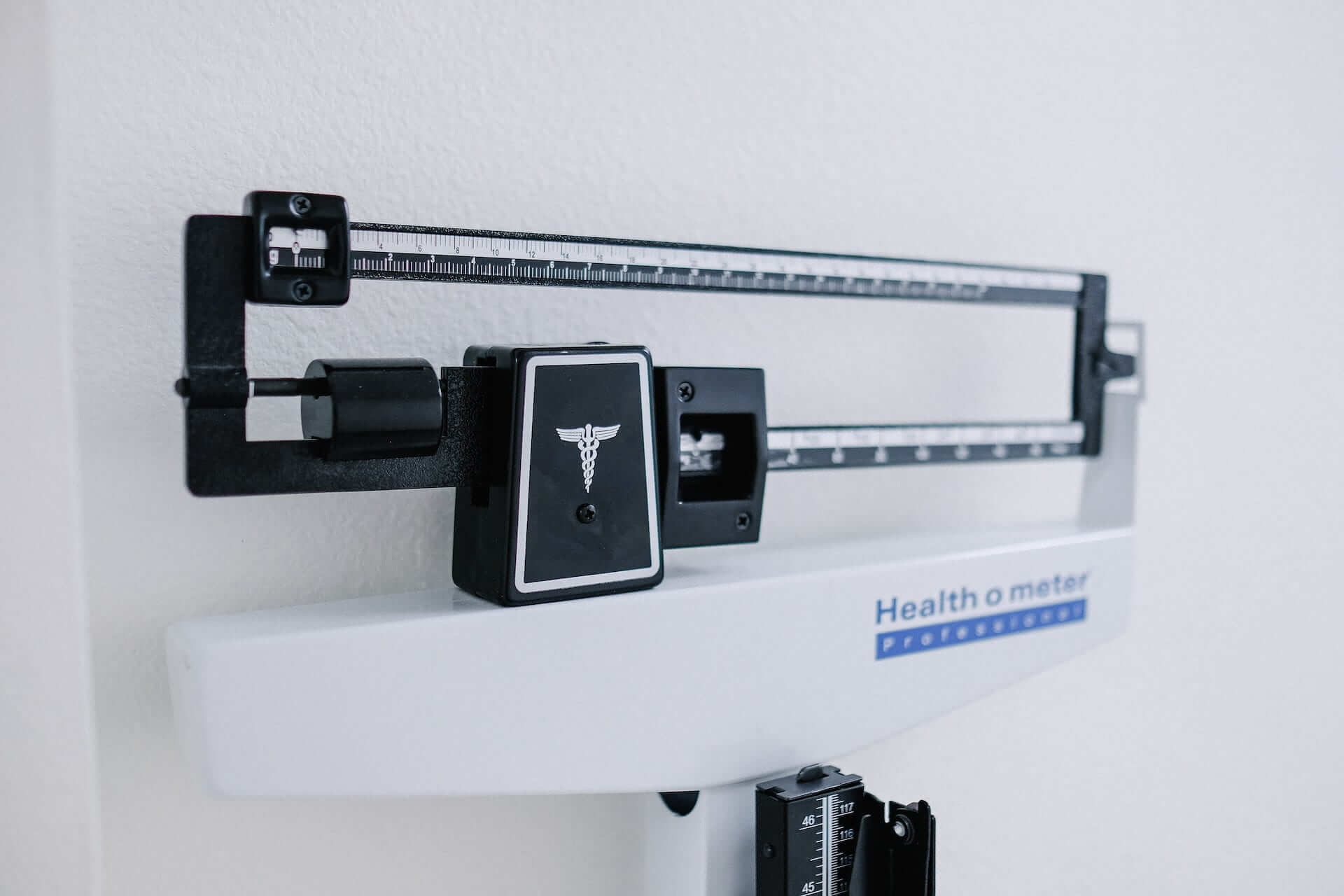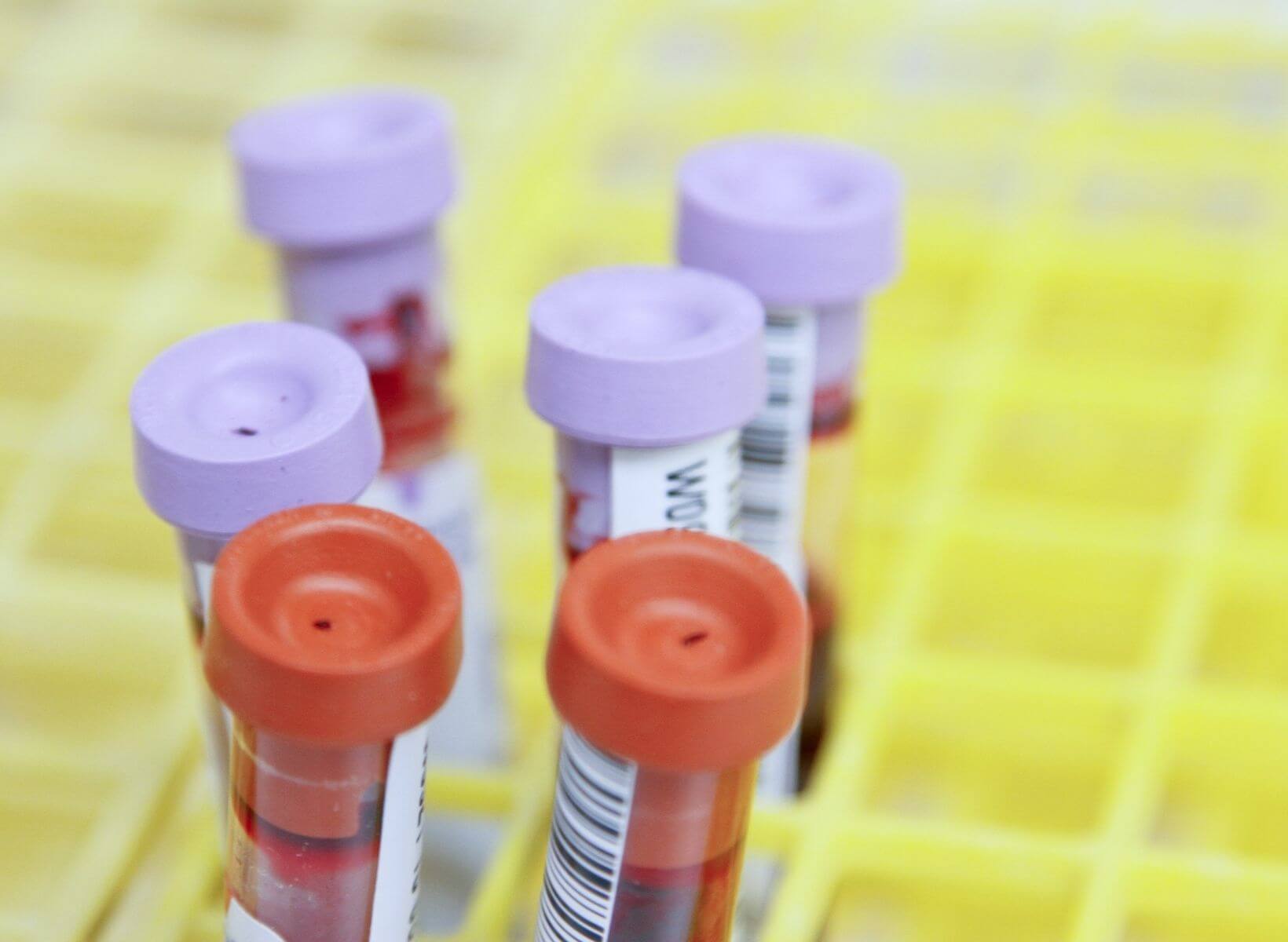Diabetes is a chronic condition characterized by the inability to produce or use insulin effectively, often leading to chronically high blood glucose levels. If not managed properly, these high blood sugars can affect other systems in the body. For example, it can lead to poor blood circulation and fluid accumulation throughout the body, especially in the lower legs and feet.
How do diabetics reduce swollen feet? In this article, we’ll discuss the science behind fluid buildup and its connection with diabetes. We’ll explore common causes, symptoms, and treatment options for swollen feet.
{{mid-cta}}
Why Do Diabetics Feet Swell?
Localized swelling in the body can be caused by several factors, such as inflammation or injury, or it could be the result of edema. Edema occurs when too much fluid gets trapped in your tissues, often in your lower extremities. While edema can have many root causes, diabetes can play a role in a variety of ways:
- Poor Blood Circulation
Chronically elevated blood glucose levels can cause arteries to thicken over time. As the arteries thicken, they lose their elasticity and shrink in size, significantly impairing blood flow to the feet. Excess fluid gets trapped if blood cannot move efficiently throughout the body.
- Medicine
Unfortunately, some medications used to manage diabetes have side effects, including edema.1 Certain non-steroidal anti-inflammatory drugs and blood pressure medications can cause excess fluid retention.
- Cardiovascular Problems
People living with diabetes are at an increased risk for developing heart disease, such as high blood pressure and congestive heart failure. If your heart cannot efficiently pump blood throughout your body, you may experience fluid accumulation.
- Kidney Problems
Diabetes is a risk factor for developing chronic kidney disease.2 Since our kidneys are involved in fluid regulation, impaired kidney function can lead to swelling in the lower extremities.
- Nerve Damage
Poorly controlled diabetes can lead to diabetic neuropathy or nerve damage in the lower extremities. Often characterized by loss of sensation in the feet, neuropathy can make it challenging to notice injuries, such as diabetic foot ulcers, blisters, and sprains.3 If left unaddressed, these injuries can result in swollen ankles and feet.
Symptoms of Swollen Feet in Diabetes

Diabetic feet swelling can be a common issue. In most cases, swollen feet can be identified by sight alone. You’ll notice that your lower legs look puffy, and when you press on your skin, your fingers will leave a slight indention. However, some symptoms might not be as apparent.
If you experience swollen feet with diabetes, you might find that your socks and shoes fit tighter than usual. You may find it difficult to walk or run, experiencing pain when you try. And if your swollen feet result from an underlying infection, you’ll notice that your foot is hot to the touch.
Symptoms may vary between individuals, so it’s essential to monitor your body and note any changes, big or small. Consider keeping a journal of your symptoms to inform your doctor of any patterns.
How to Treat Swollen Feet Diabetes
If you experience foot swelling due to diabetes, you can try several home remedies and lifestyle changes to alleviate the symptoms. However, relying on your doctor’s guidance is essential to ensure your diabetes is well-managed and all signs are addressed appropriately.
Consider these tips for treating swollen feet:
1. Elevate Your Feet
One of the easiest ways to alleviate edema in your lower leg is to elevate your feet above your heart level. Elevating your feet allows gravity to pull the accumulated fluid back to the trunk of your body, where it can be dispersed elsewhere.
2. Wear Compression Socks
Compression socks put gentle pressure on your calves, stimulating blood circulation to your feet and lower leg. They are available at many different stores, but it’s important to talk with your podiatrist or healthcare provider to ensure you buy the right size for your needs. If your compression socks are too tight, they may restrict blood flow to your feet. Use compression socks under the guidance of your doctor.
3. Follow a Healthy Diet
Nutrition plays a significant role in diabetes care. Be mindful of your carbohydrate intake, and try to eat a variety of lean proteins, healthy fats, fruits, and veggies. Also, make sure you’re staying hydrated if you experience frequent urination. If you have questions about your nutrition needs, consider meeting with a registered dietitian nutritionist.
4. Exercise Daily
Regular exercise offers many health benefits, including improved blood circulation. The latest Physical Activity Guidelines for Americans recommend that the average healthy adult aims for at least 150 minutes of moderate-intensity activity per week. This can include activities like running, brisk walking, dancing, swimming, and biking. The guidelines also suggest adding two days of strength training each week to enhance your overall health.4
5. Limit Salt Intake
Excess sodium in your system can lead to unwanted water retention. Eating less salt can moderate the amount of sodium in your system and help reduce fluid buildup. Foods like chips, processed deli meats, frozen meals, and canned foods tend to have a high sodium content. To reduce your salt intake, limit processed foods, choose low-sodium options when possible, and avoid cooking with salt.
6. Practice Weight Loss Management
When we carry excess weight, we put more pressure on our lower extremities. Finding your healthy weight can help you manage your diabetes and prevent edema in your feet.
7. Keep Magnesium Levels in Check
Fluid retention or swelling can be a sign of magnesium deficiency.5 Consider having your magnesium level checked, and if it’s low, ask your doctor about magnesium supplements.
8. Limit Sedentary Time
Sitting for long periods of time allows ample time for fluid to gravitate to your lower legs and feet. If your day-to-day activities require you to sit for an extended period, make sure to get up and walk around every one or two hours to encourage good blood circulation.
9. Prioritize Good Footwear
Those living with diabetes can help prevent foot swelling by wearing good shoes. Try to avoid high heels, shoes without arch support, and shoes that are too tight. Opt for shoes that offer comfort and don’t restrict blood flow.
10. Treat Yourself to a Foot Massage
A foot massage can help improve poor circulation and encourage adequate blood flow to your lower extremities. Consider scheduling a massage as part of your regular foot care.
When to Seek Professional Help

If the swelling in your feet is new or seems to worsen, it’s advisable to seek professional help. Additionally, if you experience increased pain, decreased sensation, or difficulty moving the affected area, it is best to call your doctor. Your provider can advise you on the proper treatment plans and help you make an informed decision based on your unique needs.
If you experience swelling in only one of your legs, seek medical attention immediately. This type of swelling could result from venous thrombosis or a blood clot that has developed in the veins.6 If you experience shortness of breath or chest pain, seek medical care immediately, as those may be signs of a heart attack or pulmonary embolism.7
Diabetes Swollen Feet FAQs
Why do people living with diabetes retain water?
Type 2 diabetes, swollen feet, and high blood sugar often coincide. High blood sugar levels can weaken veins, leading to venous insufficiency and fluid retention in the ankles, feet, legs, hands, and arms.
Why do diabetics' legs swell?
Those living with diabetes may experience leg swelling due to poor circulation. When blood cannot move efficiently throughout your body, fluid can accumulate in certain areas, like your lower legs.
Can diabetes cause swollen feet?
Yes, diabetes can lead to poor blood circulation, which can cause swollen feet. It can also cause diabetic ankle swelling.
Can sugar intake cause foot swelling?
Your sugar intake directly impacts your blood glucose levels. Excessive carbohydrate intake can lead to elevated blood sugars, affecting your blood vessels and leading to fluid retention over time.
What are common foot problems associated with diabetes?
Proper foot care is essential for those living with diabetes. Without proper care, you may experience foot problems such as
- Ingrown toenails
- Non-healing cuts, sores, and blisters
- Tingling sensation in your feet
- Loss of feeling in your feet
- Calluses and corns
- Swelling or puffiness in the feet and lower leg
What are the best-swollen feet diabetes treatments?
The best methods for treating swollen feet may vary between individuals, but options include:
- Elevating your feet
- Exercising regularly
- Eating a well-balanced diet
- Correcting your magnesium levels
- Limiting sedentary time
- Wearing good shoes
- Practicing proper foot care
Learn More About Healthy Habits and How to Improve Blood Sugar Health with Signos’ Expert Advice
Proper nutrition and exercise are essential to our overall health, especially for those with prediabetes or diabetes. The foods we eat and how we move our bodies can add or detract from our health, especially regarding fluid retention. Whether you have type 1 diabetes, in which your pancreas doesn’t make insulin, or type 2 diabetes, where it doesn’t make enough insulin, tracking your blood sugar levels is key.
Signos’ expert advice can help you manage your blood sugars effectively through continuous glucose monitoring. Learn how Signos can improve your health and more about nutrition and healthy habits on Signos’ blog.
Find out if Signos is a good fit for you by taking a quick quiz!
- Item 1
- Item 2
- item 3
Topics discussed in this article:
References
- Chaker, F., Yazid, M., Chihaoui, M., Rached, A., & Slimane, H. (2017). Insulin-induced edema: an unusual complication in a patient with diabetic ketosis. La Tunisie medicale, 95(2), 142–144.
- Bonner, R., Albajrami, O., Hudspeth, J., & Upadhyay, A. (2020). Diabetic Kidney Disease.Primary care, 47(4), 645–659. https://doi.org/10.1016/j.pop.2020.08.004
- Feldman, E. L., Callaghan, B. C., Pop-Busui, R., Zochodne, D. W., Wright, D. E., Bennett, D. L., Bril, V., Russell, J. W., & Viswanathan, V. (2019). Diabetic neuropathy.Nature reviews. Disease primers, 5(1), 41. https://doi.org/10.1038/s41572-019-0092-1
- U.S. Department of Health and Human Services. Physical Activity Guidelines for Americans, 2nd edition. Washington, DC: U.S. Department of Health and Human Services; 2018.
- Shahi, A., Aslani, S., Ataollahi, M., & Mahmoudi, M. (2019). The role of magnesium in different inflammatory diseases.Inflammopharmacology, 27(4), 649–661. https://doi.org/10.1007/s10787-019-00603-7
- Kruger, P. C., Eikelboom, J. W., Douketis, J. D., & Hankey, G. J. (2019). Deep vein thrombosis: update on diagnosis and management.The Medical journal of Australia, 210(11), 516–524. https://doi.org/10.5694/mja2.50201
- Lu, L., Liu, M., Sun, R., Zheng, Y., & Zhang, P. (2015). Myocardial Infarction: Symptoms and Treatments.Cell biochemistry and biophysics, 72(3), 865–867. https://doi.org/10.1007/s12013-015-0553-4










.jpg)





















